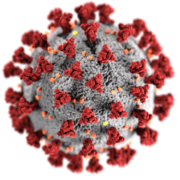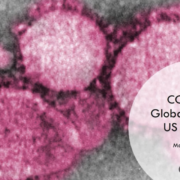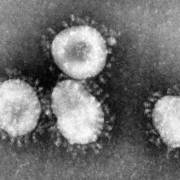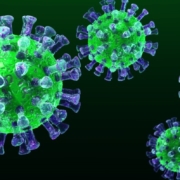By CHHS Extern Emma Evans Eiden
Thursday night, Governor Larry Hogan announced three confirmed cases of COVID-19 in the State of Maryland. While residents are encouraged to continue their daily routines, including work and school, the Governor declared a state of emergency to mobilize funds and activate full coordination between the Maryland Department of Health (MDH), the Maryland Emergency Management Agency (MEMA), and other agencies. Also under the Governor’s emergency authority, on Friday the Maryland Insurance Commissioner was directed to eliminate all patient costs and pre-authorization requirements for COVID-19 testing.
The first three cases were identified in Montgomery County and were contracted on a cruise that returned on February 20, 2020. At the time the three individuals returned, only travelers who visited China were being screened for the virus. The patients developed flu-like symptoms and were contacted earlier this week after the CDC determined that the cruise was exposed to the corona virus. The patients are now under quarantine in their homes. Contact tracing continues to identify additional exposures.
After the Governor’s announcement, Montgomery County officials including County Executive Marc Elrich reiterated that there is currently no cause for panic, while urging reasonable precautions in the event that additional cases are found in the county. For example, residents should have enough food, medications, and other supplies to remain at home for up to two weeks. Montgomery County Public Schools remain open but the school system is prepared to deploy a modified digital curriculum in the event of closures.
Dr. Travis Gayles, Montgomery County Health Officer and Chief of Public Health Services, is responsible for determining if and when to close county buildings, including schools. Dr. Gayles explained that there is currently no evidence of community spread of the disease, and the existing travel related cases are clinically doing well which suggests a mild to moderate form of the virus.
In a Friday evening press conference, Governor Hogan announced that the three Maryland cases were contracted on an Egyptian cruise on the Nile River which is also linked to six cases in Texas. Two instances of public contact by the Maryland patients have been identified so far. One of the Maryland patients attended an event in Philadelphia, PA where contact was made with local students. Pennsylvania health officials were notified, and five schools in the Philadelphia suburbs closed as a result. Another Maryland patient attended an event at a retirement community, the Village at Rockville, with over 70 attendees on Saturday, February 29. Governor Hogan encouraged attendees of the Rockville event to contact the MEMA call center.
On Sunday, Governor Hogan’s office announced two additional positive results in the state, both were contracted during overseas travel. One of the new cases is located in Montgomery County, and the patient doing well at home after a brief hospitalization. The second case is located in Harford County, and the patient, who is over 80 years old, remains hospitalized. The hospitalized patient contracted the disease on travel to Turkey, and it is the first known case to come from that country. Officials believe the risk of community exposure remains low but are advising individuals over the age of 60 years old and those with compromised immune systems to stay home as much as possible because they are significantly more susceptible to COVID-19 and experience higher mortality rates.
During a Monday afternoon press conference, Governor Hogan announced that he had just signed into law emergency legislation, unanimously passed by the Maryland legislature, authorizing the use of $50,000,000 of Maryland’s “rainy day fund” for the COVID-19 response. State employees have been directed to cancel all out-of-state travel, and all state agencies are preparing to enter a period of mandatory telework.
Governor Hogan explained that there are six additional Marylanders under self-quarantine who were on the Nile River Egyptian cruise line during different dates from the initial three Maryland cases. Two of those individuals are exhibiting symptoms, but all six will be tested for COVID-19. Also, there are 12 Marylanders aboard the Grand Princess cruiseship, which is currently docked off the coast of California, who will be transferred to military bases for examination and quarantine but are not exhibiting symptoms.
On Monday evening, a sixth Marylander was confirmed positive for COVID-19. The patient contracted the disease during out of state travel and is now located in Prince George’s County.
Last Tuesday, March 3, a memo informed Maryland health officials and providers that the MDH Laboratory was authorized to perform the 2019-Novel Coronavirus Real-time RT-PCR Diagnostic Panel. Samples may be collected locally then transported to the MDH laboratory. A provider must consult with an MDH epidemiologist prior to collecting and submitting a sample. The sender is responsible for compliance with all requirements and regulations for packaging and shipping a potentially infectious sample; however, MDH may provide some transport and courier services. Training and certification is required to package potentially infectious materials, and the certification must be renewed through the CDC every two years.
Criteria for a person under investigation (PUI) for coronavirus include a combination of clinical and epidemiological factors. Currently there are three different criteria for PUIs:
- Fever OR respirator symptoms (not necessarily requiring hospitalization) AND contact with a person with a confirmed case of COVID-19;
- Fever AND respiratory symptoms requiring hospitalization AND travel to China, Iran, Italy, Japan or South Korea within 14 days of onset; or
- Fever AND respiratory symptoms requiring hospitalization with no alternative diagnosis AND no known source of exposure.
As of Monday, MDH has processed 73 patient samples, with 6 positive results.




